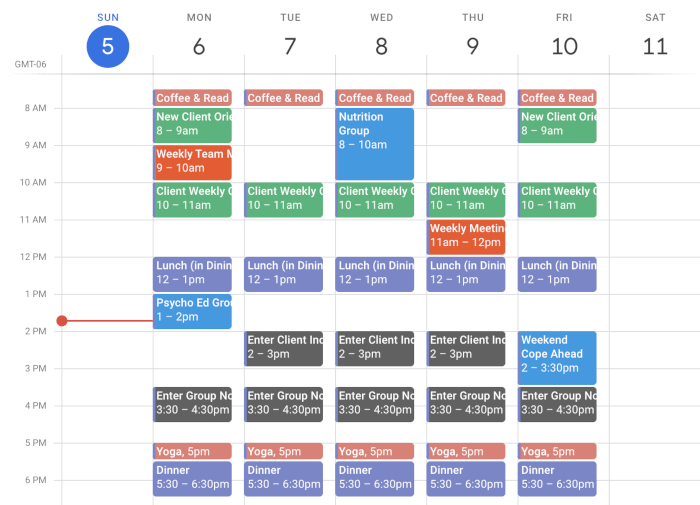Have you ever wondered why some days you feel incredibly productive while others leave you struggling to complete even simple tasks? The answer lies in something far more fundamental than motivation or willpower: your body’s internal clock. Peak performance scheduling represents a revolutionary approach to productivity that aligns your most important work with your natural biological rhythms, transforming how you approach your daily tasks.
Research from the Sleep Foundation indicates that 70% of professionals work against their natural chronotype, leading to decreased cognitive performance, increased stress levels, and reduced overall satisfaction. By understanding and implementing peak performance scheduling principles, you can unlock your body’s natural potential and achieve consistent high-level performance throughout your workday.
This comprehensive guide will walk you through the science-backed strategies for optimizing your schedule based on your unique circadian rhythms, helping you work smarter rather than harder. You’ll discover how to identify your personal chronotype, design effective scheduling strategies, and avoid common pitfalls that sabotage your natural energy patterns.
Understanding Your Natural Circadian Rhythms
Your circadian rhythm operates as an internal biological clock that regulates sleep-wake cycles, hormone production, and cognitive function over approximately 24-hour periods. This master clock, located in the suprachiasmatic nucleus of your brain, responds primarily to light and darkness cues while influencing nearly every physiological process in your body.
According to research published in the journal Nature Reviews Neuroscience, circadian rhythms affect core body temperature, alertness levels, reaction times, and memory consolidation. These rhythms create predictable patterns of peak performance windows throughout the day, typically occurring when cortisol levels are optimal and core body temperature reaches specific thresholds.
The strength of your circadian rhythm varies based on several factors:
- Age: Younger individuals tend to have stronger, more flexible rhythms
- Genetics: Inherited traits influence your natural chronotype preferences
- Light exposure: Natural and artificial light significantly impact rhythm strength
- Lifestyle factors: Sleep consistency, meal timing, and exercise patterns
Understanding these fundamental mechanisms allows you to recognize why certain times of day feel naturally more productive. Rather than fighting against these biological imperatives, peak performance scheduling leverages them to maximize your cognitive output during optimal windows.
Peak Performance Scheduling: The Science Behind Optimal Timing
The scientific foundation of peak performance scheduling rests on decades of chronobiology research demonstrating how cognitive abilities fluctuate predictably throughout the day. Studies from Harvard Medical School reveal that analytical thinking peaks during late morning hours for most individuals, while creative problem-solving often reaches its zenith during periods of moderate fatigue.
Neurotransmitter production follows distinct patterns that directly impact work performance. Dopamine levels typically surge in the morning, enhancing focus and motivation for complex tasks. Serotonin increases gradually throughout the day, supporting sustained attention and emotional regulation. Understanding these biochemical fluctuations enables strategic task allocation for maximum efficiency.
Research from the University of Toronto demonstrates that cognitive performance can vary by up to 40% depending on timing alignment with circadian rhythms. This variation affects multiple cognitive domains:
- Executive function: Decision-making and planning abilities peak 2-4 hours after awakening
- Working memory: Short-term memory capacity reaches maximum efficiency during mid-morning
- Processing speed: Mental agility typically peaks during late morning to early afternoon
- Creative insight: Novel solutions emerge more frequently during low-alertness periods
This scientific understanding forms the cornerstone of effective morning energy optimization strategies, allowing you to capitalize on your body’s natural performance rhythms.
Identifying Your Personal Chronotype for Better Productivity
Chronotypes represent individual variations in circadian rhythm timing, determining when you naturally feel most alert and when you prefer to sleep. Dr. Michael Breus identifies four primary chronotypes: Lions (morning types), Bears (moderate morning preference), Wolves (evening types), and Dolphins (light sleepers with irregular patterns). Each chronotype experiences distinct peak performance windows that should guide scheduling decisions.
Lions comprise approximately 15% of the population and experience peak cognitive performance between 6:00 AM and 12:00 PM. These individuals benefit from scheduling demanding analytical work during early morning hours while reserving routine tasks for afternoon periods when alertness naturally declines.
Bears represent the majority at 55% of the population, with optimal performance occurring between 10:00 AM and 2:00 PM. This chronotype aligns well with traditional work schedules, experiencing steady energy throughout morning and early afternoon hours before experiencing a natural dip around 3:00 PM.
Wolves account for 25% of individuals and reach peak performance between 2:00 PM and 8:00 PM. These evening types often struggle with traditional schedules but excel when given flexibility to start later and work into evening hours.
To identify your chronotype, consider these assessment methods:
- Track natural sleep and wake times during vacation periods without alarms
- Monitor energy levels hourly for one week using a simple 1-10 scale
- Note when you feel most creative versus most analytical
- Observe your natural meal timing preferences
The energy mapping technique provides a systematic approach to identifying these patterns and translating them into actionable scheduling strategies.
Peak Performance Scheduling Strategies for Different Work Types
Different categories of work require distinct cognitive resources, making strategic scheduling essential for optimizing performance across various task types. Research from the Journal of Applied Psychology demonstrates that matching task demands to circadian-appropriate time windows can improve performance by 25-35% compared to random scheduling approaches.
Analytical Work demands high levels of focus, logical reasoning, and sustained attention. Schedule these tasks during your chronotype’s peak alertness window, typically morning hours for most individuals. Examples include financial analysis, data interpretation, strategic planning, and complex problem-solving activities.
Creative Work benefits from a more relaxed mental state that allows for novel connections and innovative thinking. Research suggests that creative insights emerge more frequently during moderate fatigue periods when the brain’s inhibitory control is reduced. Schedule brainstorming, design work, and innovative projects during these naturally occurring “unfocused” periods.
Routine Administrative Tasks require minimal cognitive load and can be effectively completed during energy valleys. Use these periods for email management, filing, scheduling, and other maintenance activities that don’t demand peak mental resources.
Implementation strategies for different work environments:
- Remote workers: Leverage chronotype flexibility by designing custom schedules around natural rhythms
- Office environments: Block calendar time for deep work during peak hours and group meetings during moderate energy periods
- Shift workers: Gradually adjust circadian rhythms using light therapy and consistent sleep scheduling
Effective cognitive load management becomes crucial when implementing these scheduling strategies across different work types and environmental constraints.
Optimizing Energy Levels Throughout Your Day
Maintaining consistent energy levels requires strategic intervention during natural circadian valleys and enhancement during peak periods. The goal isn’t to eliminate energy fluctuations but rather to optimize them for sustained high performance throughout your working hours.
Morning Optimization Techniques focus on jumpstarting your circadian system through targeted interventions. Exposure to bright light within the first hour of waking helps synchronize your internal clock and enhances morning alertness. Research from Stanford University shows that 10-15 minutes of bright light exposure can advance circadian phase and improve morning cognitive performance.
Strategic caffeine consumption amplifies natural morning cortisol peaks without disrupting afternoon energy levels. Delay caffeine intake for 90-120 minutes after waking to avoid interfering with natural cortisol production, then consume 100-200mg during your natural alertness window for maximum effectiveness.
Afternoon Energy Management addresses the universal post-lunch dip that occurs between 1:00-3:00 PM regardless of meal consumption. This phenomenon results from natural circadian rhythm patterns rather than food-induced fatigue. Combat afternoon energy valleys through:
- Strategic napping: 10-20 minute power naps can restore alertness without entering deep sleep
- Light movement: Brief walks or stretching sessions stimulate circulation and alertness
- Temperature regulation: Cooler environments promote alertness during natural fatigue periods
- Task switching: Transition to routine or creative tasks that don’t require peak cognitive resources
Evening Wind-Down Protocols prepare your system for restorative sleep and next-day performance. Reduce blue light exposure 2-3 hours before bedtime, maintain consistent sleep timing, and create environmental conditions that support natural melatonin production.
Creating a Peak Performance Schedule That Actually Works
Designing an effective peak performance scheduling system requires balancing scientific principles with practical constraints. The most sophisticated chronotype knowledge becomes useless without realistic implementation strategies that account for workplace demands, personal responsibilities, and individual lifestyle factors.
Start by conducting a comprehensive audit of your current schedule and energy patterns. Document your existing commitments, noting which are flexible versus fixed, and identify opportunities for optimization within existing constraints. Most individuals discover 20-30% of their schedule offers flexibility for chronotype-based adjustments.
The 3-Zone Scheduling Method provides a practical framework for implementation:
- Peak Zone: Reserve 2-4 hours daily for your most demanding cognitive work
- Good Zone: Allocate moderate cognitive tasks and collaborative work to stable energy periods
- Maintenance Zone: Schedule routine tasks, administrative work, and preparation activities during natural valleys
Implement gradual changes over 2-3 weeks to allow for circadian adjustment and habit formation. Sudden schedule overhauls often fail due to social and biological resistance. Instead, shift one or two major tasks per week until your schedule aligns with optimal timing patterns.
Technology Integration enhances scheduling effectiveness through automation and tracking. Tools like RescueTime provide objective productivity data, while calendar applications like Google Calendar enable time-blocking strategies. Sleep tracking apps such as Sleep Cycle help monitor circadian rhythm stability and adjustment progress.
Build buffer zones around peak performance periods to prevent cognitive spillover from less demanding tasks. Protect these windows through strategic communication, setting boundaries around meeting scheduling, and creating environmental conditions that support deep focus.
Common Mistakes That Sabotage Your Natural Body Clock
Even well-intentioned individuals frequently undermine their circadian optimization efforts through seemingly minor lifestyle choices that have compounding effects on sleep-wake cycles and cognitive performance. Recognition of these common pitfalls enables proactive prevention and course correction.
Irregular Sleep Timing represents the most damaging mistake, as it prevents circadian rhythm entrainment and creates chronic jet lag effects. Weekend sleep schedule variations of more than 1-2 hours can significantly disrupt weekly rhythm stability, leading to “social jet lag” that impairs Monday through Wednesday performance.
Mistimed Light Exposure confuses circadian signaling and delays natural rhythm adjustment. Common errors include excessive evening blue light from screens, insufficient morning light exposure, and inconsistent lighting environments throughout the day. Research from Harvard Medical School demonstrates that evening light exposure can delay sleep onset by 30-60 minutes.
Productivity-focused mistakes that backfire include:
- Forcing high-cognitive work during natural valleys: Results in increased effort for decreased output
- Overscheduling peak periods: Leads to cognitive fatigue and diminished performance quality
- Ignoring individual chronotype: Following generic productivity advice that conflicts with personal rhythms
- Caffeine overconsumption: Masking natural energy patterns and disrupting sleep quality
Social and Environmental Factors often sabotage individual optimization efforts. Open office environments with constant interruptions prevent deep focus during peak periods. Social pressure to maintain conventional schedules can override chronotype-appropriate timing. Family obligations may conflict with optimal sleep timing, requiring creative compromise solutions.
Meal timing mistakes include eating large meals during peak cognitive periods, skipping breakfast when chronotype requires morning fuel, and late-evening eating that disrupts sleep quality. Strategic nutrition timing supports rather than undermines circadian optimization efforts.
Advanced Techniques for Long-Term Circadian Optimization
Mastering peak performance scheduling extends beyond basic chronotype alignment to encompass sophisticated strategies that enhance circadian rhythm strength and flexibility over time. These advanced techniques require consistent implementation but deliver compound benefits for sustained high performance.
Light Therapy Protocols use targeted light exposure to fine-tune circadian timing and enhance rhythm amplitude. Morning bright light therapy using 10,000 lux devices for 15-30 minutes can advance sleep phase and improve morning alertness. Evening red light therapy preserves natural melatonin production while allowing continued productivity.
Temperature Regulation Strategies leverage the strong relationship between core body temperature and circadian rhythms. Cool environments during natural fatigue periods enhance alertness, while gradual evening cooling supports sleep onset. Strategic use of temperature can shift circadian phase and improve sleep quality.
Advanced scheduling techniques include:
- Ultradian Rhythm Cycling: Working in 90-120 minute focused blocks aligned with natural attention cycles
- Seasonal Adjustment Protocols: Modifying schedules based on changing daylight patterns throughout the year
- Travel Optimization: Pre-adjusting circadian rhythms before time zone changes and implementing rapid resynchronization strategies
- Polyphasic Scheduling: Experimenting with multiple peak periods through strategic napping and split sleep schedules
Biomarker Monitoring provides objective feedback on circadian optimization progress. Tracking metrics such as heart rate variability, core body temperature patterns, and cortisol rhythm through wearable devices like Oura Ring or WHOOP enables data-driven schedule adjustments.
Long-term success requires building circadian resilience through consistent implementation of optimization strategies, regular assessment and adjustment of protocols, and integration of advanced techniques as foundational habits become established. The goal shifts from managing energy to cultivating sustainable high performance across years and decades.
Successfully implementing peak performance scheduling transforms your relationship with time and energy, shifting from fighting against your natural rhythms to harnessing their power for sustained excellence. The scientific evidence overwhelmingly supports chronotype-based scheduling as a fundamental component of optimal productivity and well-being.
The journey toward circadian optimization requires patience, experimentation, and consistent implementation of evidence-based strategies. Start with identifying your personal chronotype and gradually adjust your schedule to align demanding work with natural peak periods. Remember that small, consistent changes compound over time to create significant performance improvements.
Your body clock represents millions of years of evolutionary optimization designed to maximize human performance and survival. By working with rather than against these biological imperatives, you unlock your natural potential for sustained high-level cognitive performance. Begin implementing these strategies today, and experience the transformative power of aligning your schedule with your body’s innate wisdom.



